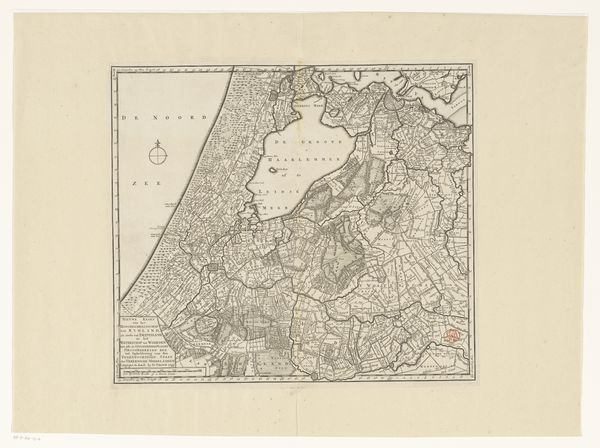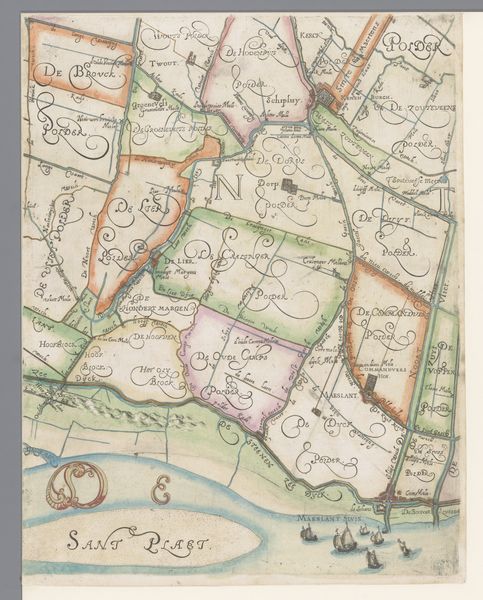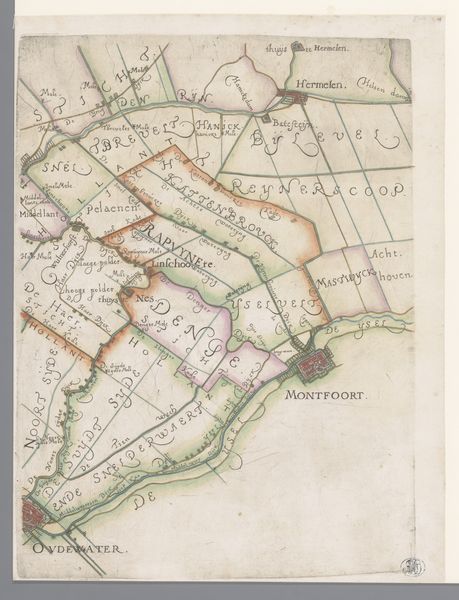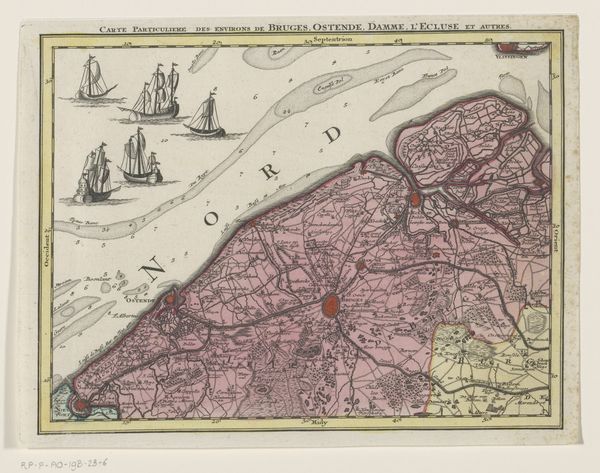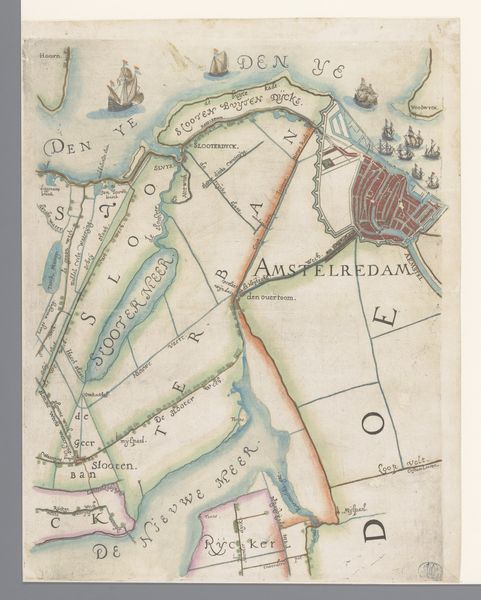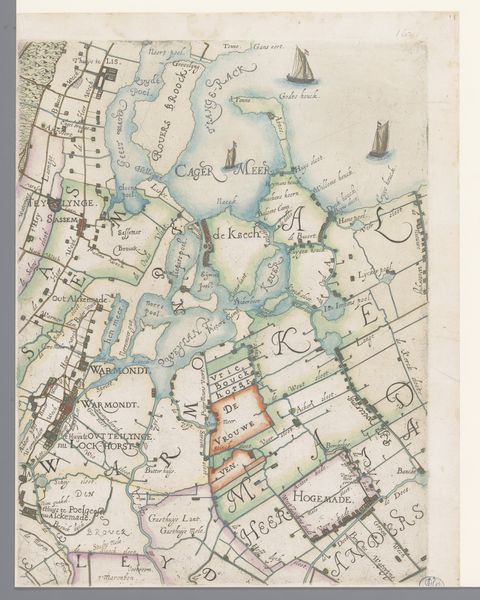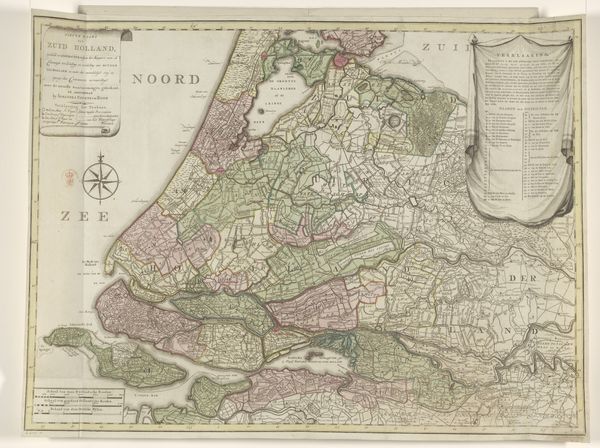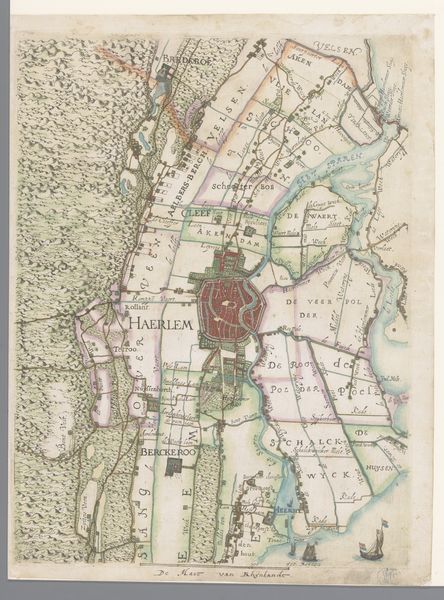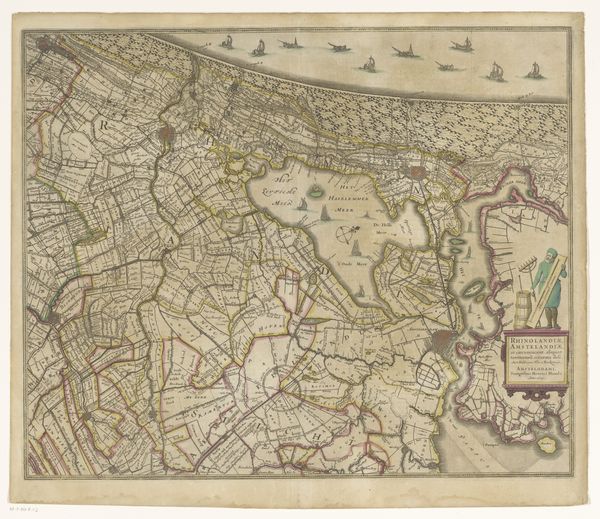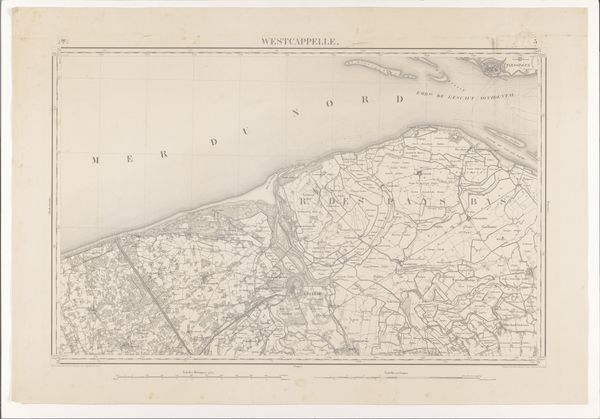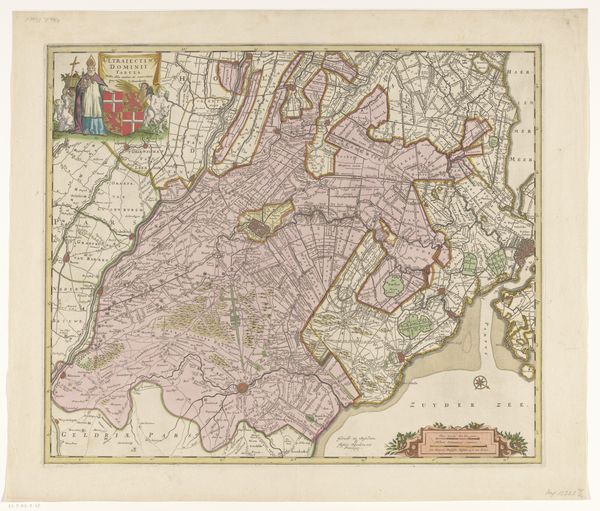
Deel van een kaart van het Hoogheemraadschap van Rijnland, met Noordwijk en omgeving 1615
0:00
0:00
painting, print, etching
#
baroque
#
dutch-golden-age
#
painting
# print
#
etching
#
landscape
#
geometric
#
cityscape
Dimensions: height 366 mm, width 278 mm
Copyright: Rijks Museum: Open Domain
Editor: Here we have "Part of a Map of the High Water Board of Rijnland, with Noordwijk and surroundings" made around 1615 by Floris Balthasarsz van Berckenrode, combining printmaking techniques of etching with painting. The detail is remarkable; it really conveys a sense of organized space, though perhaps more ideal than real. What's your take on it? Curator: It's interesting you call it 'organized space.' Maps in the 17th century were powerful political tools, often used to solidify claims and project power. The Dutch Golden Age, particularly, saw the rise of cartography as a means of both scientific understanding and national identity formation. Editor: So, beyond simply recording geography, it was performing a role? Curator: Exactly! Think about the context: the Eighty Years' War, the rise of Dutch maritime power. This map presents Rijnland, with Noordwijk and surroundings, as ordered, manageable, and crucially, Dutch-controlled. Note the precision in delineating land and waterways. What impression do you get from the way it highlights certain areas? Editor: It almost feels propagandistic, emphasizing control. The named towns seem particularly important. Curator: Precisely. Maps were commissioned by institutions like the High Water Board – powerful entities shaping the landscape and asserting control over crucial resources like water. This map not only represents territory, but the board’s sphere of influence and their perceived competency in managing the region. And, as you pointed out, this print being colored brings the projection of Dutch power and prowess to the fore. Editor: That makes a lot of sense. I initially saw order, but it is actively *constructing* order, too. Curator: Yes, reflecting the ambitions of a young nation asserting itself on the world stage. Looking at this, I now understand how important and deeply considered these seemingly simple historical documents are.
Comments
No comments
Be the first to comment and join the conversation on the ultimate creative platform.
